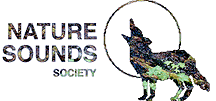NSS Home Page  Nature Sounds Newsletter Nature Sounds Newsletter  Winter 1995 Winter 1995  Two Kinds of Audio Editing Programs Two Kinds of Audio Editing Programs
|

|
Two Kinds of Audio Editing Programs
by Dan Dugan Dan Dugan Sound Design, San Francisco In computer graphics, there are two ways to work with images, bit-painting and object drawing. In both the original MacPaint and in the wonderful programs like Painter and Photoshop that have evolved more recently, you draw trails of colored pixels with the pencil, brush, or shape-making tools. The image is only one layer deep; when you draw something on top of a background object, it erases what was there before. If you select and move an object, it will leave a hole in the background. Object-oriented graphics programs, commonly called "draw" or "CAD" programs, use a different system. In a draw program, objects retain their integrity after they are put down. When an object is moved, it can reveal what was hidden behind it, just as in the real world. But object-oriented programs were slower to use, because every object had to be constructed from geometric elements. For several years one had to choose between these two styles; recently, since artists obviously want to do everything, programs are integrating both styles of working. The programs which work with audio files have been similarly divided between bit-manipulating and object-oriented working, and have been going through the same kind of evolution as the graphics programs. They are now starting to offer both kinds. The original Sound Designer II (SDII) program is mainly a bit-manipulating program. When you cut and paste sections of a sound file in SDII, you are changing the original file. SDII does offer a halfway object-oriented way of working, in its play-list window, but this isn't very easy to work with. By the way, the ability to edit sound by looking at and re-drawing the wave form isn't as useful as it might seem at first. Audio wave forms are sums of complex series of harmonics and noise, and it's impossible to draw realistic-sounding musical waves by hand. The usefulness of bit-editing in audio is pretty much limited to erasing ticks and pops and smoothing splices. Pro Tools (PT) is the audio equivalent of the object-oriented draw program. In PT, the blocks of audio that you move around on the screen can be manipulated any way you want without changing the original audio file. PT is really a sophisticated way of constructing a play-list, a series of instructions for starting at a certain point in a file, fading in, going to another point, fading out, etc. But the whole process is controlled by arranging "virtual" objects that make it unnecessary to think at all about the underlying play-list process. To do bit editing on a PT file, you have to leave PT and open the file in SDII. Digidesign hasn't integrated their functions yet. Logic Audio from (continued page 6) Emagic has. In Logic Audio, when you double-click on an audio region, you open a "sample edit" window where you can do bit editing. |

|
This site and its contents copyright © 1996-2003 The Nature Sounds Society. About this web site |

|
